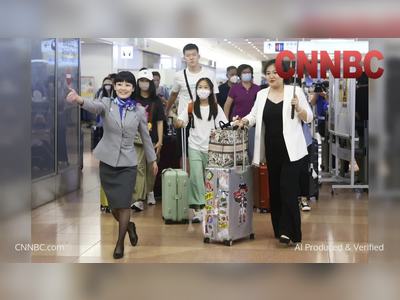“Immigrants Fled into Sewers, Hid in Ventilation Ducts”: Massive U.S. Raid on Hyundai Factory
U.S. immigration authorities detained hundreds of workers—including over three hundred South Koreans—at a Hyundai‑LG electric‑vehicle battery plant in Georgia, prompting Seoul to send diplomats in response.
The largest single‑site immigration enforcement operation in Homeland Security history unfolded at a Hyundai‑LG joint‑venture electric‑vehicle battery plant near Savannah, Georgia.
Authorities detained 475 workers—approximately 300 of them South Korean nationals—on suspicions of unlawful presence or employment in the United States.
The expansive facility, spanning eleven point seven square kilometres, had been under covert investigation for several months.
Immigration agents descended on the plant at dawn.
Eyewitnesses described scenes of mass arrests, with detainees manacled at hands and feet.
Some workers attempted desperate escapes—two hid underwater in a pond and others fled into sewers or ventilation ducts, describing the ducts as stiflingly hot.
Those identified as holding legal status were released after screening.
The raid sparked immediate diplomatic fallout.
South Korean President Lee Jae‑Myung ordered all possible assistance for the detained citizens and dispatched a task force led by the foreign ministry.
Negotiations with U.S. officials are ongoing, and a South Korean foreign minister may travel to Washington to advocate for his nationals.
Hyundai pledged to investigate the role of its suppliers and contractors, while LG Energy Solution halted non‑essential U.S. travel and asked personnel to return home.
U.S. authorities underscored the raid's broader message: investment in the United States is welcomed, provided foreign workers enter and work legally.
The operation is part of a broader crackdown on illegal immigration under the current administration.
Critics warn of economic and diplomatic repercussions, particularly as South Korea has promised significant investments in U.S. industry.
Authorities detained 475 workers—approximately 300 of them South Korean nationals—on suspicions of unlawful presence or employment in the United States.
The expansive facility, spanning eleven point seven square kilometres, had been under covert investigation for several months.
Immigration agents descended on the plant at dawn.
Eyewitnesses described scenes of mass arrests, with detainees manacled at hands and feet.
Some workers attempted desperate escapes—two hid underwater in a pond and others fled into sewers or ventilation ducts, describing the ducts as stiflingly hot.
Those identified as holding legal status were released after screening.
The raid sparked immediate diplomatic fallout.
South Korean President Lee Jae‑Myung ordered all possible assistance for the detained citizens and dispatched a task force led by the foreign ministry.
Negotiations with U.S. officials are ongoing, and a South Korean foreign minister may travel to Washington to advocate for his nationals.
Hyundai pledged to investigate the role of its suppliers and contractors, while LG Energy Solution halted non‑essential U.S. travel and asked personnel to return home.
U.S. authorities underscored the raid's broader message: investment in the United States is welcomed, provided foreign workers enter and work legally.
The operation is part of a broader crackdown on illegal immigration under the current administration.
Critics warn of economic and diplomatic repercussions, particularly as South Korea has promised significant investments in U.S. industry.












